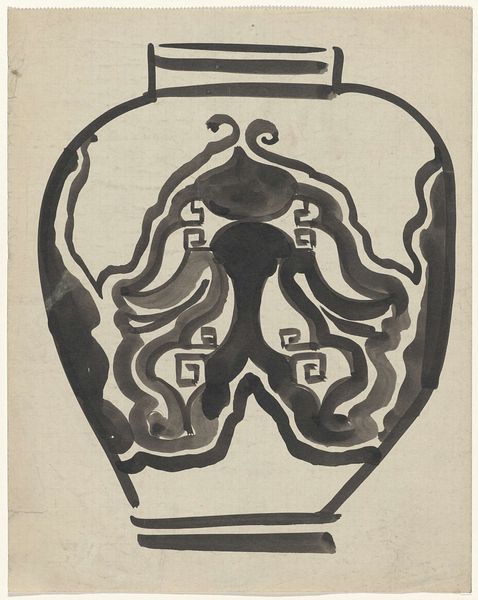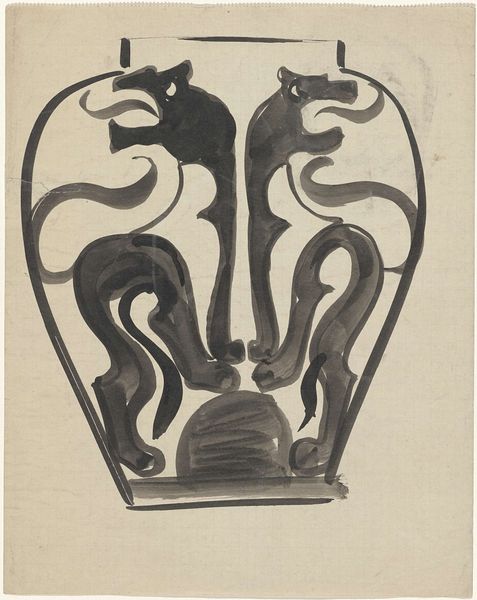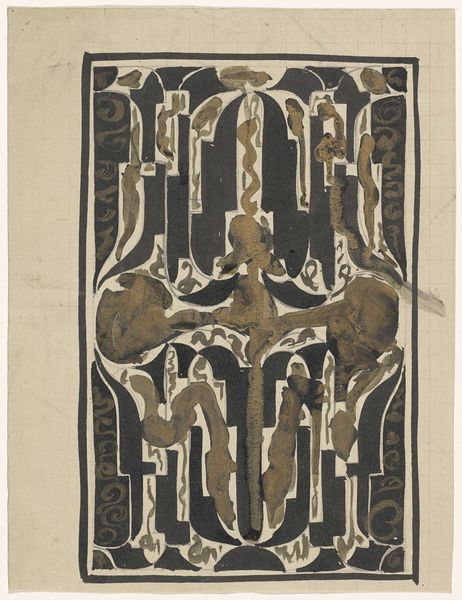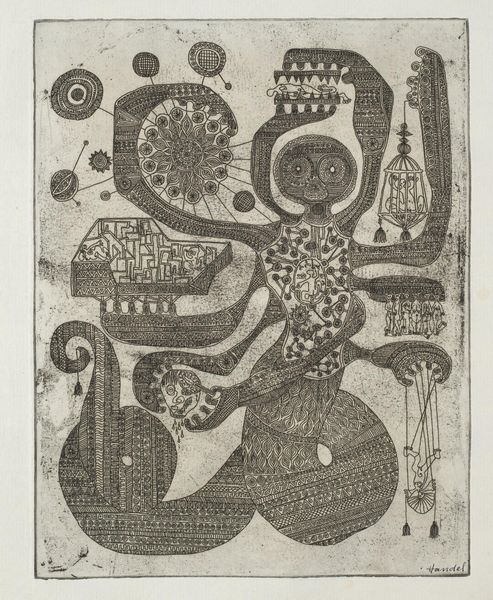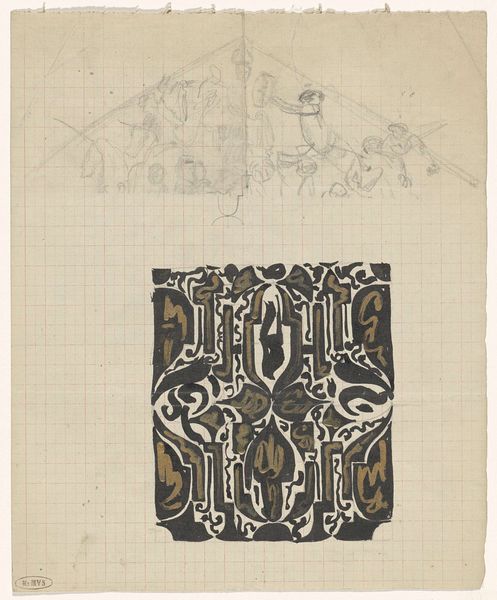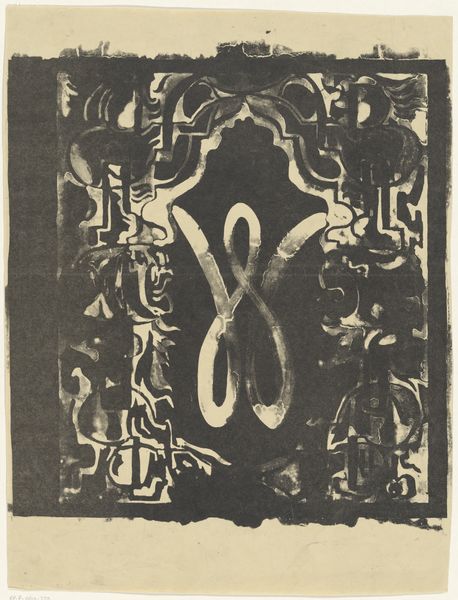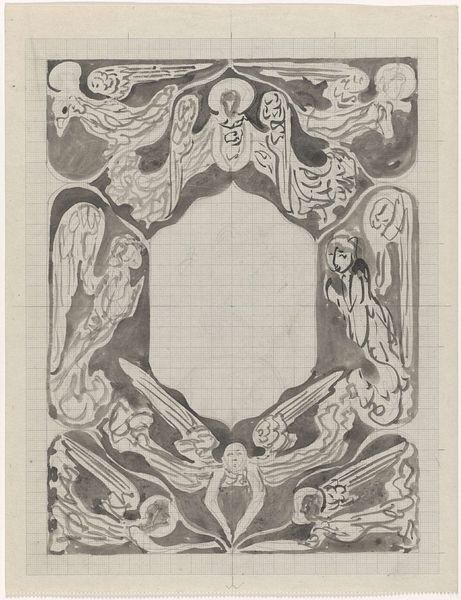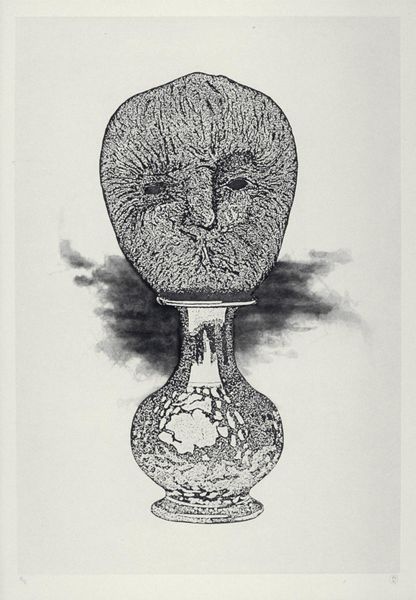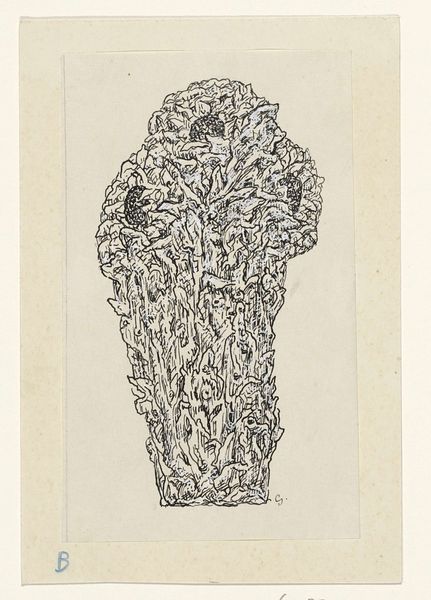
drawing, paper, ink
#
drawing
#
vase
#
paper
#
ink
#
linocut print
#
geometric
#
line
#
decorative-art
Dimensions: height 277 mm, width 220 mm
Copyright: Rijks Museum: Open Domain
Editor: This is "Ontwerp voor een vaas," or Design for a Vase, created between 1874 and 1945, by Carel Adolph Lion Cachet. It’s ink on paper, housed here at the Rijksmuseum. I find its swirling patterns quite mesmerizing, but some elements appear to be staring back. What symbols jump out at you in this piece? Curator: Indeed, it’s captivating. Notice how the artist employs eyes nestled within teardrop shapes. Eyes have served as potent symbols across cultures – windows to the soul, emblems of surveillance, divine omniscience, or even protection. These embedded eyes, combined with the swirling motifs, suggest a dynamic interplay between observation and concealed emotion. Do you see how the vase form itself, traditionally a vessel for containment, becomes a vehicle for revealing inner landscapes? Editor: I do. The vessel isn't just holding something; it's displaying an interior world. Almost like the vase is alive, or perhaps haunted. Curator: Exactly! Cachet’s design merges form and content seamlessly. Consider the black ink – not just a pigment but a shade associated with introspection, the subconscious, and mourning. It could represent a symbolic lament, a holding of grief. The blank eyes amplify the symbolic power of that melancholy. Does the partial vase sketch on the left offer a different, more hopeful alternative in your mind? Editor: I hadn't considered that. It almost suggests the other possibility is being discarded. This has given me a new way to appreciate decorative arts, viewing them as narratives. Curator: Precisely! Objects carry the weight of human experience, anxieties, and aspirations. Approaching design this way helps us understand not only aesthetics but cultural memory.
Comments
No comments
Be the first to comment and join the conversation on the ultimate creative platform.

